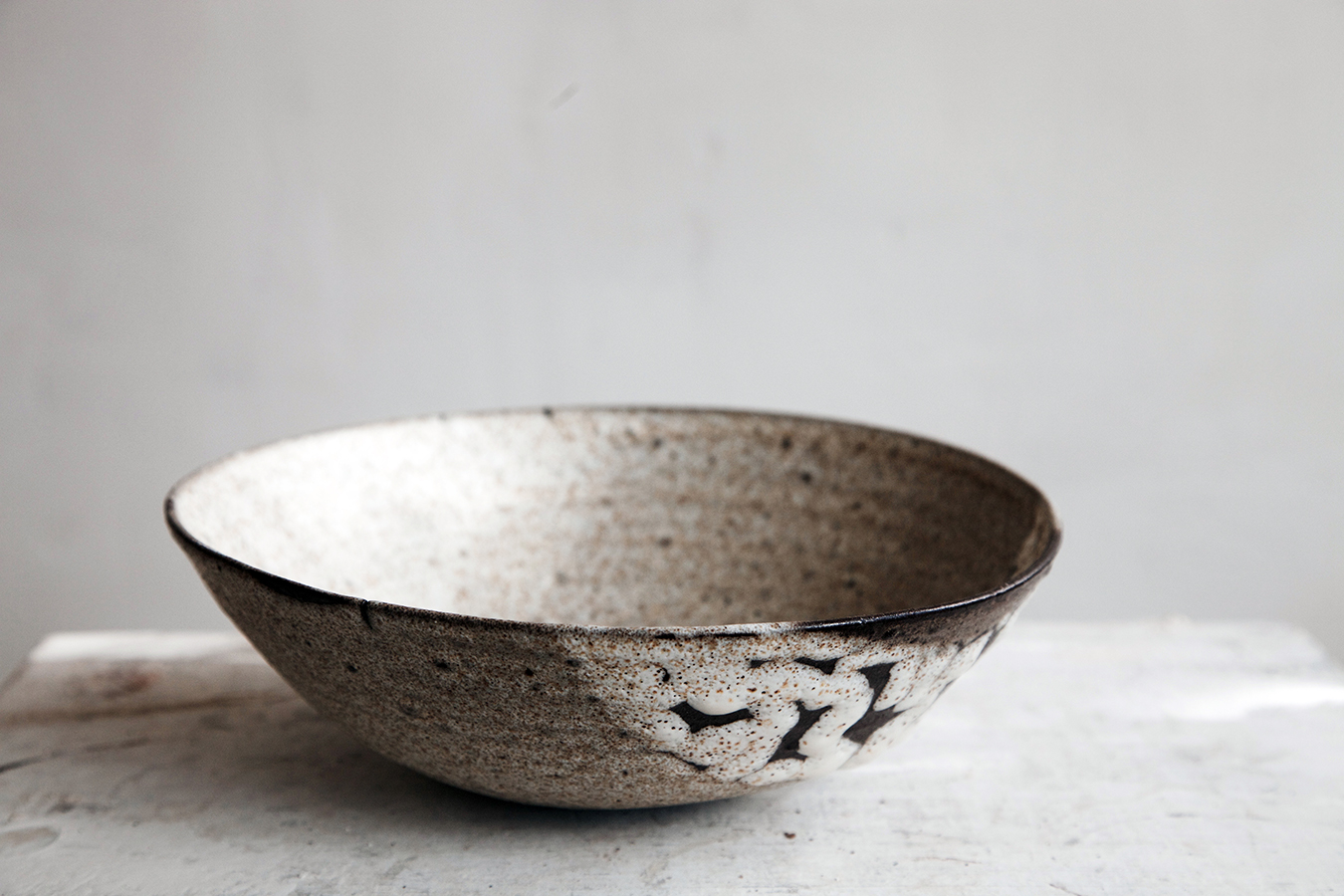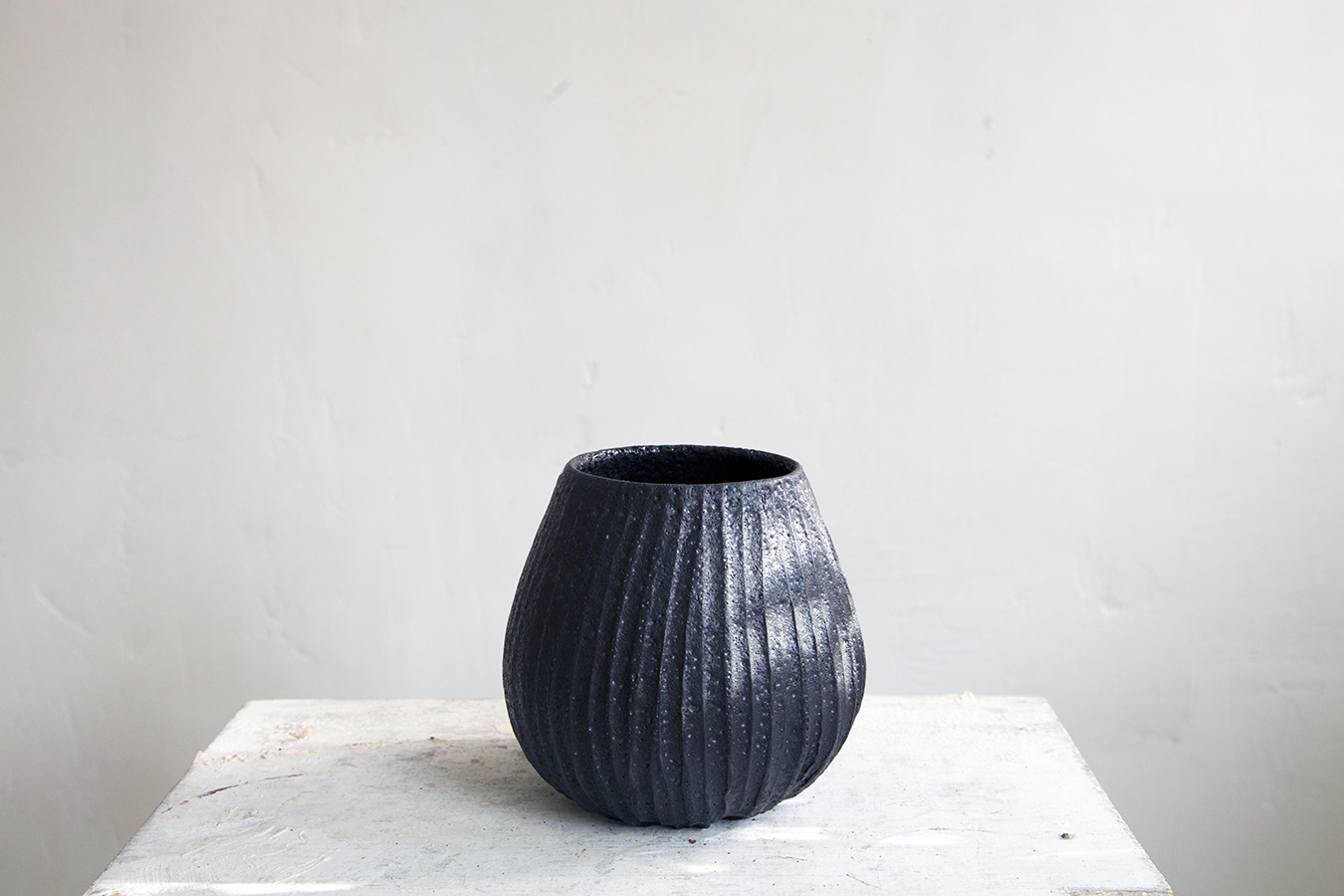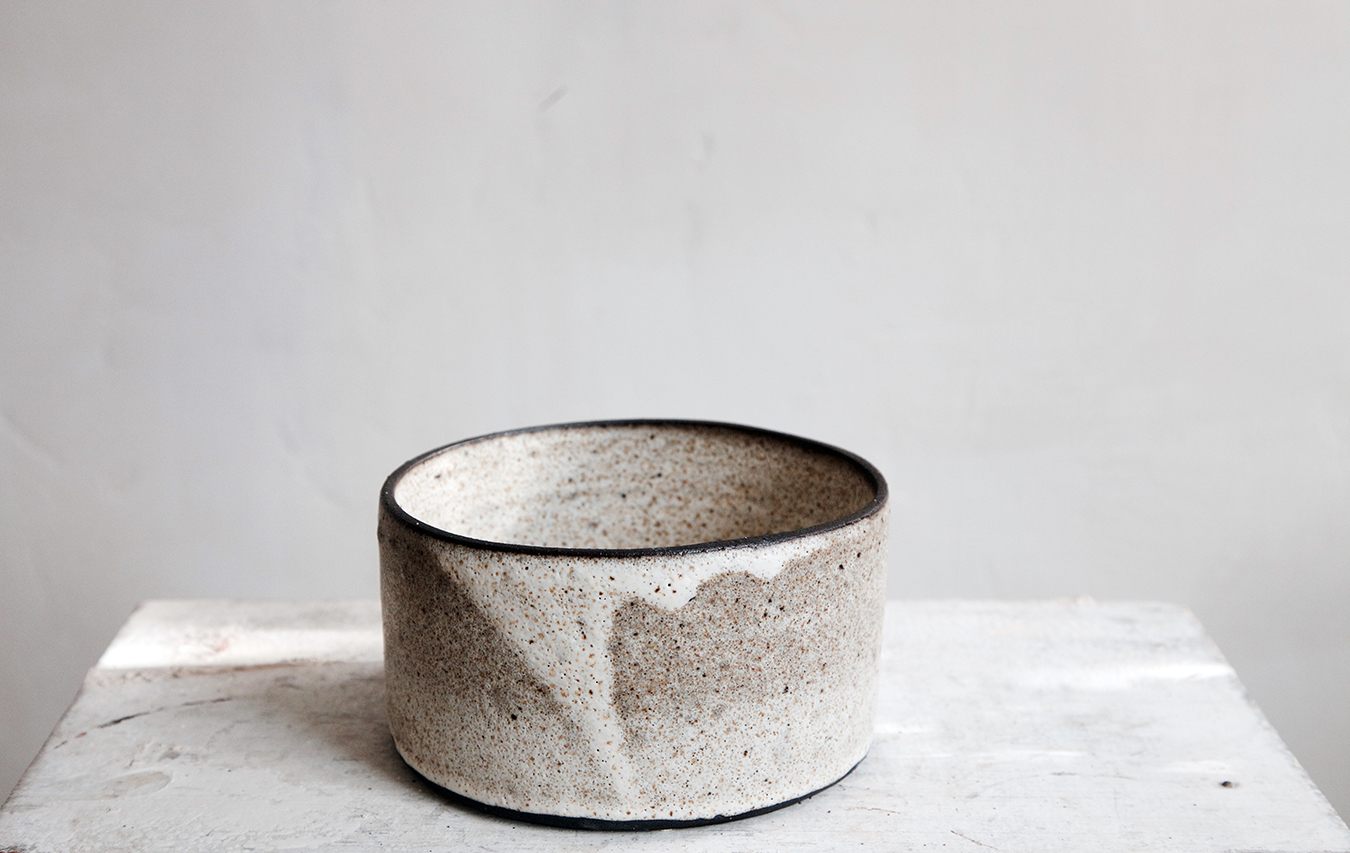Janaki Larsen is an excellent host. Her gracious, warm presence makes even a dusty, clay-strewn ceramics studio feel welcoming. It’s a quality that clearly extends throughout her and her husband’s much adored Riley Park general store and café Le Marché St. George, which evokes dreamy, fairy-tale connotations. Among stacks of rough, unfinished figures small and large, Larsen is still settling into her new studio at 7th and Ontario. “This is my first actual studio in like, six years,” she exhales. “When we opened Le Marché, and then I had my daughter, I was working from our backyard. So I’m really happy. Really happy to be here.” Larsen motions to separate corners of the small space, exclaiming, “I have a kiln, and a wheel, and a sink—all in the same room!”
What is truly remarkable is what Larsen had already achieved from her backyard studio. Embraced by cooks, bloggers, and the many who occupy the space somewhere in between, Larsen’s simple, clean, and organic style of ceramics has found itself in good company. “I’ve had a pretty amazing year; it started with the first Gwyneth [Paltrow] book, and now she has a second one coming out,” says Larson, referring to Paltrow’s best-selling cookbook It’s All Good and her forthcoming sequel of sorts, both of which feature Larsen’s pieces. Add to that accolades from Danish chef Mikkal Karstad, and features in Food and Wine, Bon Appetit, and Martha Stewart, and it’s clear that Larsen’s ceramics have mass appeal.
Rough and raw, Larsen’s work fully envelops the Japanese wabi-sabi aesthetic tradition. Embracing rather than fixating on imperfections and blemishes translates not into klutzy, sloppy products, but rather into a harmonious connection between soil and form. “I think nature is my biggest inspiration. I’ve been obsessing over barnacles,” says Larsen, moving towards a tower of prickly white bowls. “That’s been my biggest excitement: trying to figure out something that looks like all of these things.”
Among the barnacle bowls are dishes with peeling bone-white glaze resembling birch bark, and Japanese tea ladles Larsen mentions she will use for forcing buds in the spring. There’s an organic quality not just in the aesthetics, but in her entire approach. “There are people who keep fastidious notes on things, measurements—I’m not like that,” she says. “I glaze and I make pots the same way I cook, which is like, ‘Oh, I’ll just do this.’ If someone says, ‘I want something that’s this big by that and has this certain texture,’ I’m not sure if I can do that. Even if I’ve gotten better at it I still can’t, and I don’t know if I want to.”
Recently, ceramics have taken a new place on the dinner tables of stylish consumers. “I think now, in a roundabout way, it’s a backlash. Everything now is so manufactured and so mass produced,” says Larsen. Choosing scratch-made tableware echoes the ethos pronounced in conscience cooking. “It does feel different, eating out of something that is handmade rather than mass produced. It’s a totally different experience,” continues Larsen. “Every once in a while I go out to eat and I eat off of a regular plate. I’m like, ‘Woah, it’s so shiny and doesn’t do anything!’”
With plans to extend her Mount Pleasant studio into a storefront operation (it opened for a brief period of time before Christmas), Larsen is working towards something unanticipated. “I’ve had a studio off and on now for about 15 years, and I’ve been making pots for about 16 years, so it’s something I’ve always wanted to do, I think, deep down, more as a retirement plan,” she reflects. “Both of my parents are artists, and I’ve seen them struggle through living artists’ lives, and I’ve always thought, ‘I don’t want to do that.’ No, it’s not anything I planned on. But I’m definitely happy it’s gone that way.” It’s an incomplete, imperfect strategy, and it looks beautiful.












